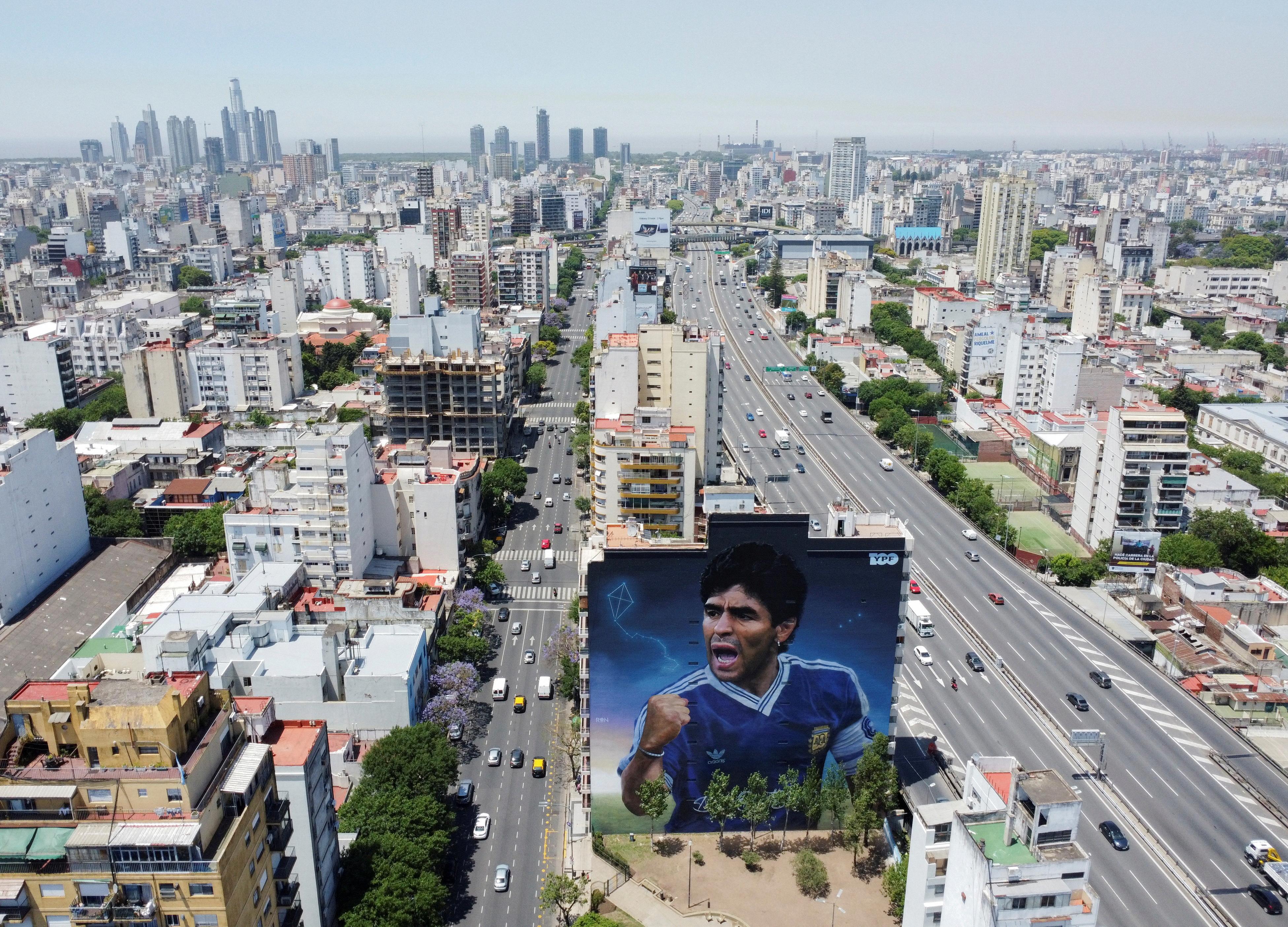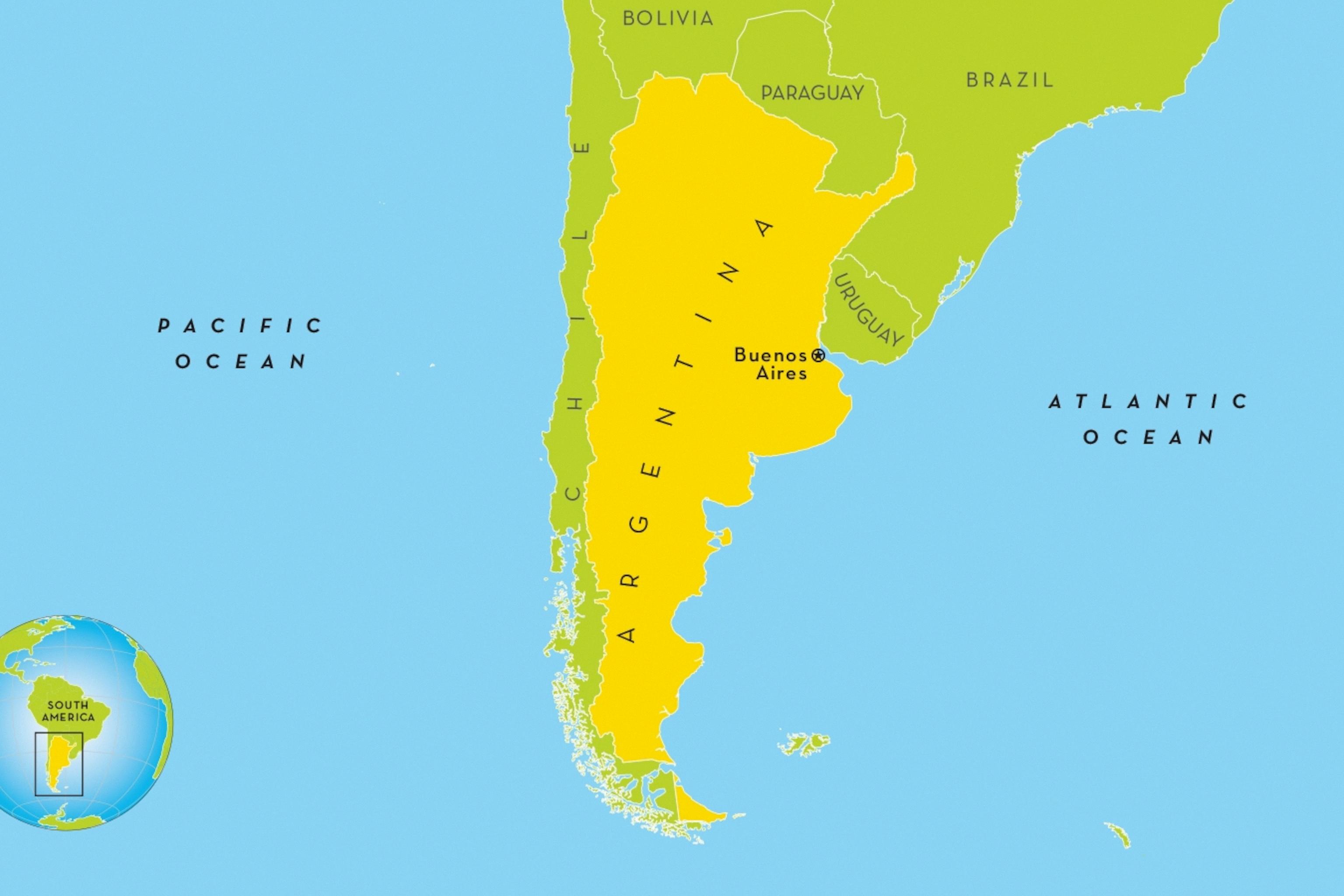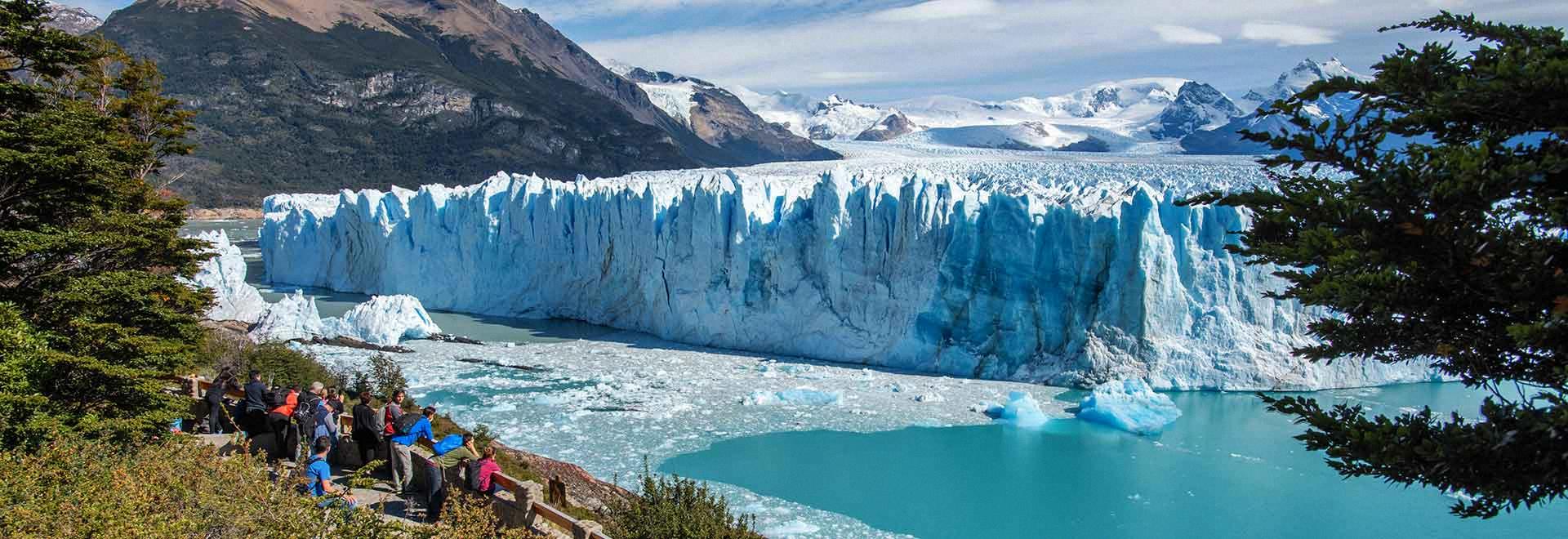Argentina is a diverse country located in South America, known for its vibrant culture, delicious cuisine, and stunning landscapes. While most people associate Argentina with warm weather and sunny beaches, it may come as a surprise to some that snowfall occasionally occurs in some parts of the country.
Buenos Aires, the capital city of Argentina, rarely experiences snowfall within its borders. Since the start of meteorological observations in 1906 at the central observatory, snowfall has only been observed thrice: June 1918, July 1928, and July 2007. However, the surrounding areas of the city do see occasional snowfall.
In other parts of the country, snow is much more common. The southern region of Patagonia experiences the coldest winters in the country, with frost and snow being frequent occurrences. The Andes Mountains, which run along the western border of Argentina, are also known for their snow-capped peaks and world-renowned ski resorts.
While the climate in Argentina varies greatly depending on location, the country experiences warm but wet summers in most regions except for Patagonia where summer is the driest season. Winters tend to be mild in the north and colder in the south.
It is important to note that Argentina is a large country with varying climates and weather patterns. Visitors should research the specific region they plan to visit and pack accordingly.
While snowfall is not a common occurrence in most parts of Argentina, it is still possible to experience it in certain regions. From the bustling city of Buenos Aires to the snowy peaks of the Andes Mountains, Argentina offers a diverse range of climates and landscapes for travelers to explore.
Does Snowfall Occur in Buenos Aires, Argentina?
Buenos Aires, the capital city of Argentina, experiences snowfall very rarely. In fact, since the beginning of meteorological observations in 1906, snow has only been recorded thrice at the central observatory – in June 1918, July 1928, and July 2007. While snowfall occasionally occurs in the surrounding areas of the city, it is a rare occurrence within Buenos Aires proper. Therefore, it is safe to say that Buenos Aires does not typically receive snowfall on a regular basis.

Source: reuters.com
Does Argentina Experience Cold Weather?
Argentina does experience cold weather, especially in the southern regions of the country. During the winter months, which run from June to September, temperatures can drop significantly, and frost and snow are common in areas such as Patagonia. However, the severity of the cold weather varies depending on location, with the northern regions of the country experiencing milder winters. while Argentina is known for its warm climate, it is important to be prepared for cold weather if traveling to the southern regions during the winter months.
Average Lowest Temperature in Argentina
The coldest temperature ever recorded in Argentina was -32.8°C (-27°F), which occurred on January 6, 1907 in the town of Sarmiento. The temperature was measured using a Maximum/Minimum Thermometer that was placed in a Standard Stevenson Screen, which is a type of weather instrument used to protect the thermometer from direct sunlight and other weather conditions. Sarmiento is located in southern Argentina, at a latitude of 54°21’S and longitude of 68°11’W, and has an elevation of 268 meters (879 feet). While this record-breaking cold temperature is quite rare, it is not uncommon for parts of Argentina to experience extremely cold temperatures durng the winter months, particularly in the southern regions of the country.
The Climate of Argentina
Argentina is a country that experiences a wide range of temperatures, depending on the region and time of year. In general, the northern parts of the country are warmer and more tropical, while the southern regions are much cooler. The range of mean temperatures for summer months (December to February) is about 72–75 °F (22–24 °C), which can be considered warm, while that for winter months (June to August) is about 46–55 °F (8–13 °C), which is colder.
Therefore, Argentina can be considered both a hot and a cold place, depending on whee you are and the time of year. If you are planning a trip to Argentina, it is important to research the specific regions you will be visiting and pack accordingly to ensure your comfort.
Does Africa Experience Snow?
It snows in Africa. While Africa is commonly known for its warm temperatures and sunny climate, there are several regions on the continent whre snowfall is a regular occurrence. The Atlas Mountains in the Maghreb, Mount Kenya, and Mount Kilimanjaro are some of the places where snow regularly falls. In fact, Mount Kilimanjaro, which is the highest peak in Africa, has permanent snow and glaciers on its summit. The Rwenzori Mountains, which are situated on the border of Uganda and the Democratic Republic of the Congo, also have permanent glaciers. Therefore, although snow may not be a common weather phenomenon in most parts of Africa, it is still a natural occurrence that takes place in some areas of the continent.

Source: kids.nationalgeographic.com
Does Brazil Experience Snow?
Brazil does have snow, but only in certain regions of the country. Snowfall occurs annually in the high plains of the South Region, which includes the states of Rio Grande do Sul, Santa Catarina, and Paraná. In these areas, snow is a common occurrence during the winter months. However, in other parts of the country, snow is a rare phenomenon but has been observed several times. So, while snow is not a regular occurrence throughout Brazil, it does happen in some areas of the country.
Language Spoken in Argentina
The official language of Argentina is Spanish. However, due to the significant international migration that the country has experienced over the years, other languages such as Arabic, Italian, German, English, and French are also spoken in certain areas. Additionally, there are over one million people who speak various tribal languages, including Quecha and Guaraní. Therefore, while Spanish is the primary language spoken in Argentina, the country is home to a diverse range of languages and dialects.
The Coldest Country in South America
South America is known for its tropical climate and warm weather, but there are certain regions that experience extremely cold temperatures. When it comes to the coldest country in South America, it is important to note that temperature records vary depending on altitude and location. However, based on recorded low temperatures, the coldest country in South America is Argentina.
The town of Sarmiento in Argentina holds the record for the lowest low altitude temperature ever recorded in South America, with a bone-chilling temperature of -32.8°C (-27°F). The town is located in the southern Patagonian region, which experiences extremely cold winters due to its proximity to Antarctica and the Andes Mountains.
Other regions in Argentina, such as Ushuaia and Bariloche, also experience sub-zero temperatures during the winter months. However, it is worth noting that temperature records in the High Andes may be even colder, but they are not regularly monitored or recorded.
While South America is not generally known for its cold weather, Argentina can definitely provde a frigid experience for those seeking it out.
Famous Attractions and Products of Argentina
Argentina is a country that is famous for several things. Firstly, it is known worldwide for its passion for soccer, with some of the best soccer players in the world hailing from Argentina. The country is also renowned for its love for Mate culture, which is a traditional beverage that serves as a social ritual in Argentina. Additionally, Argentina is famous for its love for Tango, a dance that originated in Buenos Aires and is now popular worldwide.
Argentina’s natural beauty is also a famous feature, with stunning landscapes in Patagonia, including mountains, glaciers, and lakes. The country’s vibrant city life in Buenos Aires offers a unique and exciting experience for travelers. The city is home to many landmarks such as the Obelisk, Casa Rosada, and the iconic Caminito street in La Boca.
Argentina is also famous for its wine, with the country beng the fifth-largest wine-producing country globally. Argentine wine is of exceptional quality, and the country has gained a reputation for producing some of the world’s best Malbec wines.
Argentina’s cuisine is also famous, with traditional dishes such as Asado, empanadas, and dulce de leche. These dishes are popular with locals and visitors alike and have become an essential part of the country’s culture.
Argentina is famous for its passion for soccer, Mate culture, love for Tango, stunning natural landscapes, vibrant city life, wine, delicious food, and world-renowned landmarks. Visitors to Argentina are sure to have an unforgettable experience, immersing themselves in the country’s unique and fascinating culture.

Source: abercrombiekent.com
What Not to Wear in Buenos Aires
When traveling to Buenos Aires, it is important to keep in mind that it is a major metropolitan area with a very urban feel. Therefore, it is advisable to avoid wearing hiking clothes as they may appear out of place. Additionally, it is recommended to leave bhind expensive or flashy accessories when traveling to Argentina, as it may draw unwanted attention. In terms of footwear, it is best to avoid uncomfortable shoes, particularly during the daytime. So, while planning your trip to Buenos Aires, it is best to keep these clothing and accessory choices in mind to ensure a comfortable and enjoyable experience.
The Hottest Place on Earth
The hottest place on earth, according to a recent study, is the Lut Desert in Iran. It has a consistently hot footprint over a large area, making it the hottest place on the planet. The temperature in the Lut Desert can reach up to 70.7 degrees Celsius (159.3 degrees Fahrenheit), which is the highest temperature ever recorded on earth’s surface. This region is devoid of any vegetation or water sources and is known for its unique landscape, including sand dunes, salt plains, and volcanic features. The extreme heat in the Lut Desert makes it a challenging place to visit, and it is essential to take necessary precautions wile exploring the area.
Exploring the Beauty of Argentina in Winter
Argentina is a great destination to visit during the winter season. While some parts of the country can experience cold temperatures and snow, many regions offer mild and pleasant weather during this time. For example, cities like Buenos Aires, Mendoza, and Cordoba typically have comfortable temperatures ranging from around 50 to 70 degrees Fahrenheit during the winter months. This makes it an ideal time to explore the cultural attractions, food scene, and outdoor activities that Argentina has to offer wthout having to contend with the heat and crowds of the summer season. Additionally, winter in Argentina coincides with the country’s ski season, which means that visitors can hit the slopes in popular destinations like Bariloche or Las Lenas. Argentina can be a wonderful choice for a winter vacation, whether you’re looking for city sightseeing or outdoor adventure.
The Hottest Month in Argentina
Argentina’s hottest month is January. During this time, the average daily high temperature in Buenos Aires, the country’s capital city, is above 77°F (25°C), with an average high of 82°F (28°C) and a low of 69°F (21°C). This warm season lasts for 3.5 months, from November 30 to March 13, making January the peak of the country’s summer season. It is important to note that temperatures may vary depending on the region of the country, as Argentina has a diverse climate due to its size and varying topography.

Source: nbcnews.com
Nationality of a Person from Argentina
The nationality of a person from Argentina is Argentinian or Argentinean. The people of Argentina are commonly referred to as Argentines and are identified with their country of origin, Argentina. In Spanish, the masculine form of the nationality is Argentinos while the feminine form is Argentinas. Argentina is a South American country located in the southern hemisphere and is known for its diverse culture, rich history, and natural beauty. Therefore, individuals who are from Argentina hold the nationality of being Argentinian or Argentinean.
Temperature of Ocean Water in Argentina
The answer to the question “Is the ocean water warm in Argentina?” depends on the specific location and time of year. In Buenos Aires, which is located on the eastern coast of Argentina, the average annual water temperature is 65°F. During the winter season, the water temperature drops to 54°F, while in spring it rises to 64°F. In the summer months, the water temperature is the warmest, reaching up to 75°F. In autumn, the temperature cools down slightly to around 67°F.
It’s important to note that the minimum water temperature in Buenos Aires drops to 51°F in June, making it quite cold for swimming or water activities. On the oter hand, the maximum water temperature of 80°F is experienced during January, which is a much more comfortable temperature for swimming and water sports.
While the ocean water in Argentina may not be consistently warm throughout the year, it can reach comfortable temperatures during the summer months and in certain locations. It’s always a good idea to check the water temperature and weather conditions before planning any water activities.
Conclusion
Argentina is a diverse country with varying climates and landscapes. The country experiences warm and wet summers in most parts, while winters tend to be mild in the north and cold in the south with frequent frost and snow. The lowest temperature recorded in Argentina was -32.8°C in Sarmiento. The capital city, Buenos Aires, rarely experiences snowfall, with only thre recorded instances since 1906. The range of mean temperatures for summer and winter months varies greatly, with temperatures ranging from 72–75 °F in summer to 46–55 °F in winter. Argentina’s climate and temperature range make it an interesting and varied destination for travelers.
